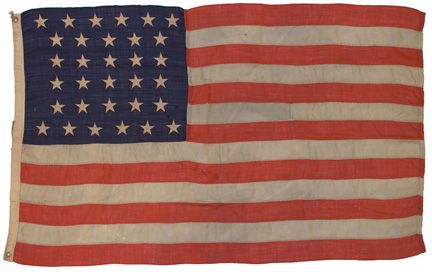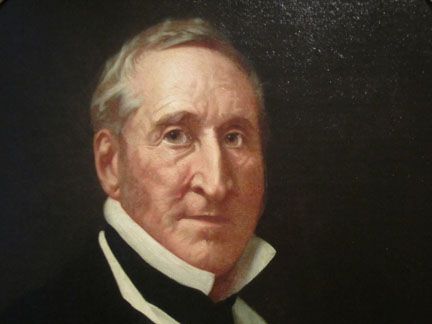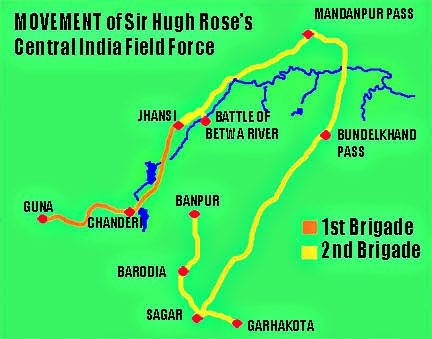The Republic
June 1858
National News
More Violence in 'Bleeding' Kansas
 Pro-Slavery Ruffians Murder Free-Staters in Latest Bleeding Kansas Violence
Pro-Slavery Ruffians Murder Free-Staters in Latest Bleeding Kansas Violence
After months of relative calm in Kansas territory, some of the worst violence to date erupted between pro- and anti-slavery factions, leaving five dead, and five seriously wounded. On 19 May, a small band of about 30 pro-slavers stopped at the village of Trading Post, in Linn County. Eleven abolitionists and free-staters were captured in their fields or taken from their homes and marched into a ravine approximately 4 miles northeast of Trading Post and shot. Five of the prisoners were killed, five were seriously wounded and one was unharmed. None of the men captured were armed or, it is said, had participated in the ongoing violence.
The names of the killed were: William Stilwell of Sugar Mound, recently from the state of Indiana. He was a young man, not over 28 and had a young wife and 2 small children. When he left home the morning of the massacre, his wife, with a presentiment of evil on her mind, urged him to take the Territorial road to Kansas City via of Osawattomie (sic). He assured her that there was no danger in taking the most direct road -- that he was known as (a) peace(ful) man and would not be molested. He was killed with a double-barreled shot-gun, loaded with pistol balls, the charge entering his left breast.
Patrick Ross was an Irishman, who had been driven from his claim on the Little Osage, by a band of border ruffians.
Mr. Colpetzer, a farmer from Pennsylvania. He was a quiet, peaceable man -- a fair type of that class of sturdy settlers who, snugly nestled among the green hills and valleys of the land of Penn, have by generations of thrift and industry, made her character for sobriety and good will proverbial to the world. He left a wife and family.
Michael Robinson was a farmer from Iowa. He was a good citizen and universally respected.
John F. Campbell, the storekeeper, was from Pennsylvania. He was of a remarkably social disposition and had endeared himself to all who knew him. He was quite young and had never been married.
The wounded were Wm. Hairgorve, Asa Hairgrove, Charles Reed, Amos Hall and Charles Snyder. Wm. Hairgrove and Asa Hairgrove are brothers, originally from Georgia, who came to Kansas to live in a Free State. The Rev. Charles Reed is a Baptist clergyman from Wisconsin, who moved into the neighborhood of the Post the week previous to the tragedy. He denounced the course of the border-ruffians in public which had earned their hatred. Amos Hall was a settler and Charles Snyder, the blacksmith, was shot in the leg and back.
The dead were brought to the village (of Trading Post) and placed in one of the houses. Some of the seriously wounded were there also; among them "Preacher Reed", as he was familiarly termed, who had crawled off into the woods after he was shot and was not found until the morning following, when he was discovered by his wife, who had searched for him all night and who had him conveyed to the town, where his wounds, which were dangerous, could be tended to and dressed.
The survivors identified the leader of the raiding band as Charles Hamilton, who was known to them because he had been a resident of Linn County. Hamilton was originally from Georgia, owned slaves and had been forced off his land in Linn County and driven to Missouri by abolitionists. After the massacre, it is believed that Hamilton and his men returned to Missouri.
The outbreak of new violence was a blow to efforts by federal troops at Fort Scott under command of Captain Nathaniel Lyon to restore law and order to the territory. Since 1855, there have been 59 deaths attributed to violence between pro-slavers and abolitionists.
Minnesota Celebrates Statehood

Minnesota entered the Union as the 32nd state on 11 May . Known as the "Land of 10,000 Lakes," Minnesota is the northern terminus of theMississippi River's traffic and the westernmost point of the inland waterway that extends through the Great Lakes and the St. Lawrence Seaway to the Atlantic Ocean. White settlement of the area began in 1820 with the establishment of Fort Snelling. In 1849, Minnesota became a U.S. territory. The building of railroads and canals brought a land boom during the 1850s, and Minnesota's population swelled from only 6,000 in 1850 to more than 150,000 by 1857.
Former Missouri Senator Dies

Washington DC – Former Missouri Senator Thomas Hart Benton, nicknamed Old Bullion died in April. Thomas Hart Benton was originally from North Carolina, but became a Senator in Missouri after being kicked out of the University of North Carolina and after serving in the Tennessee state militia under Andrew Jackson. Benton earned the name Old Bullion for his hard money views and ferociousness in debate. Benton was an unflagging advocate for gold coin (specie) or bullion as money—as opposed to paper money backed by gold. "Soft" currency, in his opinion, favored rich urban Easterners at the expense of the small farmers and tradespeople of the West.
Benton was a legendary duelist and he was involved in many duels, including a pair involving attorney and Missouri legislator Charles Lucas. In 1817, the two had accused each other of lying when on opposite sides of a court case and later in the year, they had a dispute during an election about Benton’s eligibility to vote. Benton called Lucas an “insolent puppy” and Lucas demanded satisfaction. During the first duel at 30 paces, Lucas was shot through the throat, but survived. Benton was shot just below the knee. During the second duel, at nine paces, Lucas died less than an hour after being shot close to the heart. Benton was uninjured.
Benton also was involved in a legendary brawl with Andrew Jackson. The fight between Jackson and Benton started while Jackson was general of the Tennessee militia and Benton was his aide-de-camp. There was a quarrel between Jackson’s friend and Benton’s brother, which resulted in a duel in which both men took bullets but survived. Jackson was present at the duel and a mediator. Benton accused Jackson of conducting the affair of honor unfairly and Jackson decided that Benton and his brother, “both deserved a thrashing.”
Jackson ran into Benton and his brother outside a hotel and a brawl ensued. Jackson was hit by two bullets, one in the left arm and one in the left shoulder, which ruptured an artery. Several Jackson friends and relatives entered the brouhaha and pulled Jackson out of a pool of blood. Benton received several knife wounds, but escaped significant injury because he fell down a flight of stairs early in the fight.
The fight was a political embarrassment for Jackson, who was a much older man than Benton, after he nearly died from his wounds. However, despite the deadly struggle between them and the bad feelings, Jackson and Benton would reconcile and become strong allies when Jackson became president of the United States. Benton was “Jackson’s voice” in the Senate and was critical to Jackson’s victory in his war against the Second Bank of the United States.
Years after the fight Benton was asked if he knew Andrew Jackson and he replied, “Yes, sir, I knew him, sir; General Jackson was a very great man, sir. I shot him, sir. Afterward he was of great use to me, sir, in my battle with the United States Bank.”
International News
Rose Makes Gains For British In Central India Campaign

Sir Hugh Rose, who assumed the command of the Central India Field Force on 17 December 1857, has made impressive British gains in Cenral India. In January, the Raja of Banpur was defeated by Rose’s 2nd Brigade in a Skirmish type battle. At Barodia the Raja of Banpur again and Anant Singh were defeated in a battle whose intensity and magnitude may be gauged from the fact that the 2nd Brigade only suffered casualties of 2 men killed and 21 wounded. Sagar was relieved by the 2nd Brigade with whom Rose was marching on 3rd February. The relief of Sagar made communication and cooperation with the 1st Brigade possible because of the direct road link between Sagar and Guna, where the advance guard of the 1st Brigade was located. From Sagar, Hugh Rose and his 2nd Brigade advanced to Garhakota which was captured after a brief siege on 12 February. Again British casualties were light with none killed and four wounded. After Garhakota, Rose went back to Sagar for rest and resupply.
Rose resumed his advance on 27 February and took the passes leading into Bundelkhand by resorting to feint attacks that misled the various local rulers about his direction of attack. Again these were insignificant operations since the fighting was nominal. At the battle of Madanpur Pass fought on 3 March, Rose suffered casualties of none killed and 12 wounded.
Chanderi was besieged and captured by the 1st Brigade on 17 March with a loss of just 3 killed and 23 wounded. Meanwhile Rose ordered the 1st Brigade to join him for the siege of Jhansi. The 1st Brigade marched from Chanderi towards Jhansi and joined the 2nd Brigade on 25th March at Jhansi.
British forces found Jahnsi well-defended and the fort had heavy guns which could fire over the town and nearby countryside. Rose demanded the surrender of the city; if this was refused it would be destroyed. After due deliberation the Rani Lakshmibai of Jhansi issued a proclamation: "We fight for independence. In the words of Lord Krishna, we will if we are victorious, enjoy the fruits of victory, if defeated and killed on the field of battle, we shall surely earn eternal glory and salvation." She defended Jhansi against British troops when the siege began on 23 March 1858. The British bombardment was met by heavy return fire.
 The Rani Lakshmibai
The Rani Lakshmibai
The defenders sent appeals for help to rebel leader Tatya Tope. His army of more than 20,000 tried to relieve Jhansi but was defeated by Rose on 31 March near the Betwa River. During the battle with Tatya Tope's forces, part of the British forces continued the siege and by 2 April it was decided to launch an assault by a breach in the walls. Four columns assaulted the defenses at different points and those attempting to scale the walls came under heavy fire. Two other columns had already entered the city and were approaching the palace together. Determined resistance was encountered in every street and in every room of the palace. Street fighting continued into the following day. The Rani withdrew from the palace to the fort and after taking counsel decided that since resistance in the city was useless she must leave. With her son Damodar Rao on her back she jumped on her horse Badal from the fort and escaped. It is believed that the Rani Lakshmibai has joined Tatya Tope in Kalpi.